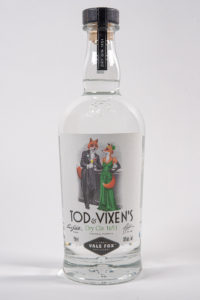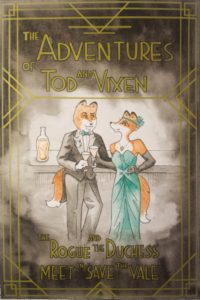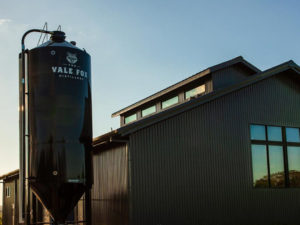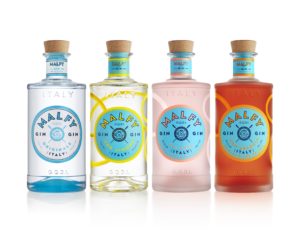Making sense out of confusion
Online purchasing of almost everything has been growing for years, including wine. But, spirits have only just begun to enter the direct shipment world with lots of obstacles and constraints. How come?
My partner Rob Warren and I have spent the past year and a half researching and learning about the emerging business of direct sales of spirits to consumers.
(We are partners in a brand building and route to market consultancy called Wisdom & Booze, LLC. He’s the wisdom, which is why I asked his help in writing this article.)
In a nutshell, we learned: 1) the need for Direct to Consumer (DtC) spirits sales is important to both makers and drinkers alike 2) online solutions for spirits will grow (we felt that way even before the coronavirus) 3) there is a patchwork quilt of players and solutions and 4) frankly, the quilt often contains confusion and, at times, land mines.
Our journey began with a quest to enter the business, to either create an enterprise or partner with someone already in it.
Then it struck us… few of the players in the business understand the spirits world, and what it takes to develop and build a brand. They understand the world of e-commerce and the digital gold mine it can provide, but know little about the world of the producer, or consumer, for that matter. With some notable exceptions, DtC providers are strictly transaction focused.
The world of direct, it occurred to us, means control of the presentation and sale of your brand; a closeness to the buyer/consumer previously obscured from view by the layers between the maker and the drinker — also known as the 3-tier system. As an example, Rob and I worked on Crown Royal back in the day, and direct marketing to consumers meant that the brand developed a relationship (some would even say a bond) with its drinkers. Using direct marketing efforts, we made the brand come alive and turned drinkers into fans and influencers.
So, we gave up chasing the players to join them and became “agnostic,” a business entity focused on the maker/producer and a guide to what we see as the important, but not always effective, quagmire known as the current state of DtC.
To sell booze online you need wisdom.
Let’s back up for a moment…
Online purchasing of almost everything has been growing rapidly for years, even prior to the coronavirus. Direct buying of alcohol, in the form of wine, has become a $3+ billion a year business. Over 40 states allow for direct interstate shipments. At the same time, direct delivery of cannabis is already happening in medical and recreational use states.
Ah, but for spirits, it’s catch as catch can — intrastate is generally okay but some in the business will tell you they ship to most places, others say a few, and even one told us: “I ship everywhere. I mark it “Olive Oil” (wink, wink).
Let’s see if we got this straight. Selling cannabis is classified by the Federal government as a Class A felony. But 11 states and DC allow for recreational use and another 31 either allow cannabis for medicinal purposes or have decriminalized its use. In addition, wine can be shipped all over the country — intra and interstate. But I can’t send a bottle of liquor made in New York to Colorado.
Didn’t we decide a long time ago that alcohol is alcohol? Check with the National Institute of Health, a drink is a drink —12 oz of beer = 9 oz of malt = 5 oz wine = 1.5 oz of spirit.
Part of the problem is the misconception that liquor is hard and other forms of alcohol are… what, not hard? Soft?
The growth of DtC for spirits
This emerging method of distribution began way before the virus reared its ugly head. The changing spirits and trade environments were at the core of the impetus. Consider this:
- The wine people, particularly small wineries, led the charge with direct shipments from their wineries, sales to consumers who visited, and eventually 3rd party wine shippers (including the NY Times and WSJ) entered the fray.
- Industry consolidation and resulting financial pressures at all tiers created limitations on brand choice and selection. Examples: Which would you rather sell as a distributor sales rep, 6 bottles of a small unknown brand or 6 cases of a winner. A typical retailer question — “which leading brand should I remove from my shelf to make room for your crap?”
- Even at the mainstream producer level, small, fledging brands get the hind teat, while the successful ones live high off the hog, so to speak. (Never mind that Tito’s and Bulleit were once startups).
- And then there is the consumer him/herself, whereby the new drinking world of cocktails and quality over quantity, has led to a “discovery” mode of the new, unique and desirable.
- The term “desirable” has many driving factors — the story behind it; the limited availability; unique and not many others are like it; shows knowledge and good taste; outstanding product; and so on.
Convenience at one end, hard to find and desirable at the other end — all add up to an important 4th tier, the consumer.
The current DtC landscape
For the most part, there are three main segments:
1) Convenience — local purchases and local delivery.
2) Marketplace — brand aggregators selling a range of brands
3) White label — a “storefront” embedded on a brand’s website.
All of them follow the 3 tier system requirements.
The convenience segment is what is currently driving the DtC efforts. Companies like Drizly, using local retailers, are at the heart of the market. Basically, a delivery service (fast, reliable, and good at what they do), the focus is on mainstream brands that consumers know and are popular.
But, for small brands that consumers want but are hard to find — craft and top shelf alike — Drizly may not be the answer. According to Drizly:
“One of the most important things to remember is that Drizly brings retailers’ shelves online. That means it is important to have a renewed or refreshed focus on their [small brands] distributor relationships in order to work with those partners to ensure that they’re showing up on the actual shelves, and therefore on Drizly’s virtual shelves.”
A Drizly presence means the same route to market as usual but on an ecommerce platform. The key is product availability and distribution.
Fortunately, the presence of LibDib, a web-based distribution platform, can significantly help resolve the distribution problem. Their footprint is growing (currently NY, CA, CO, IL, FL, WI) and their link with Republic National Distributing Company (RNDC) means their distribution role will further be enhanced.
In effect, LibDib provides a virtual national distribution platform for all segments of the direct to consumer approaches. (See other articles I have written about them here, and here.)
The marketplace (an online store) can range from actual stores (e.g., Country Wine and Spirits, Total Wine and More, etc.) to strictly online retailers using a combination of local retailers and interstate shipping where allowed. Think of them as a liquor emporium with a large inventory of brands, both mainstream and hard to find.
Such sites as Caskers, Cask Cartel, Flaviar, and others offer a range of digital services that are comparable to in-store displays, end aisles, features, and the like. The services are not cheap but they can be effective if the producer drives consumers to the site and the site has a strong database for outreach.
The most interesting of these sites is Flaviar, which I have written about before. Here is how they describe themselves:
“Flaviar is a band of spirits enthusiasts, inspired by culture, rich history and the art of distillation. We forage the World of Spirits for the finest, rarest and most unique expressions out there and pack it all into a 21st century Members Club.”
Unlike nearly all, Flaviar develops a relationship with consumers (for a fee) and offers engagement, brand education, trial, and more, in addition to a transaction. Further, they are moving into the product development arena and bringing their own products to the market alone or in conjunction with a producer.
The most interesting segment to us, is the white label or embedded effort on a brand’s own website. Basically, a company builds a “store” on a producer’s website that seamlessly takes a consumer to a transaction site at the click of a button. Think of it as a branded storefront.
There are a number of significant players in this segment, all of whom have seen their business grow dramatically during the coronavirus. The companies we are most familiar with are Cask and Barrel Club, Passion Spirits (new website under construction), Thirstie, and Speakeasy. Each has their own strengths and weakness that producers and brands need to consider with regard to their online needs and expectations.
There are a number of significant advantages to this approach including the absence of brand clutter, and the opportunity to talk directly to a consumer and develop brand loyalty. The fulfillment aspect provides the opportunity to further engage the consumer with a range of efforts — shipping and product discounting with multiple purchases, recipe cards, swag, personalized messages, etc.
On the downside, just because you can go to a “brand owned” store at the click of a mouse doesn’t mean a wide and receptive audience. “Build it and they will come” only works in the movies. To drive traffic to an embedded store means planning, digital and social media support, a database, strong brand PR and more.
What have we learned so far
What does it take to succeed and to avoid pitfalls on the DtC journey?
Do your homework — get to understand the players in the ecommerce world and match your brand plans and consumer insights to the optimal approach and company. There are quite a few out there (with more coming) but there are wide differences among them.
Read the Terms of Service or Terms and Conditions offered to consumers. It’s a great way to understand the ecommerce player and their market and consumer focus.
Consider the economic value of any ecommerce transaction. Will the revenue generated offset the cost, particular when it comes to an embedded ecommerce site? Whether it’s marketplace or white label, there are cost considerations and return on investment decisions to be made.
But, wait a minute, maybe it’s not just about the finances. Perhaps in the world of brand discovery and/or desire, ecommerce offers sampling and trial in addition to availability.
Think about the consumer and the experience of an ecommerce spirits purchase. Are you presenting the brand in the best light? How long will it take for the consumer to receive the product? Who is the shipper?
In that regard, the delivery of the product is a pet peeve of ours. We can’t tell you how many times an anxiously awaited product has arrived wrapped in what looks like a dog’s breakfast. The shipper is trying to assure that there will not be breakage but in so doing, brands come in Styrofoam peanuts, ridiculous and hard to unpack bubble wrap, and outer wrapping more appropriate to packing fish than expensive spirits. Is that how you want to present your brand?
A critical element in the selection of an ecommerce provider is the availability of data and the extent to which that data is robust and insightful. Who is buying and how often? What else are they buying? Where have they come from (online) and where do they go? Do they provide an in-depth understanding of your consumer? Who owns the consumer database?
Lastly, and relatedly, how often do they report the transactions, in what format, and what access do you have?
The future for direct shipments of spirits
Every new enterprise requires a learning curve and even a shakeout period. It’s called evolution. The coronavirus has played a role in the acceptance and use of spirits DtC and we believe it’s here to stay beyond this horrific period. It provides the ability to receive products by delivery and to acquire desirable but hard to find brands. But that’s not all. It gives the producer a direct link to a consumer and the opportunity to develop an ongoing relationship — directly and one to one.
In particular, spirits DtC is an important element, perhaps even the life blood, of a small brand (craft or otherwise) whose route to market is difficult.
So, look for more players entering the market with different approaches, good and bad. Some will succeed and some will fail; some are right for a particular brand but many are not. Above all, look for the players that provide more than just a transaction.













